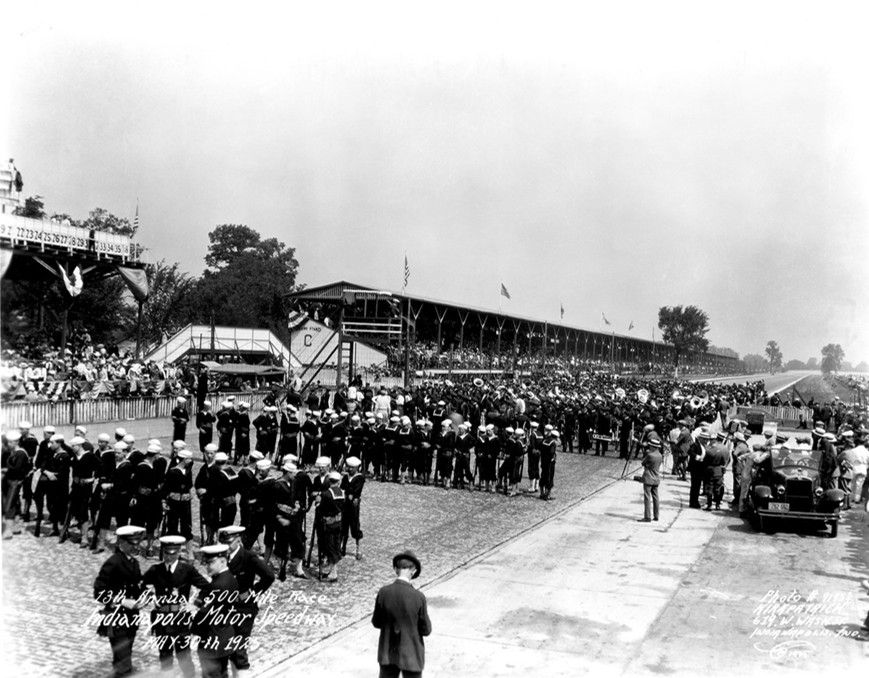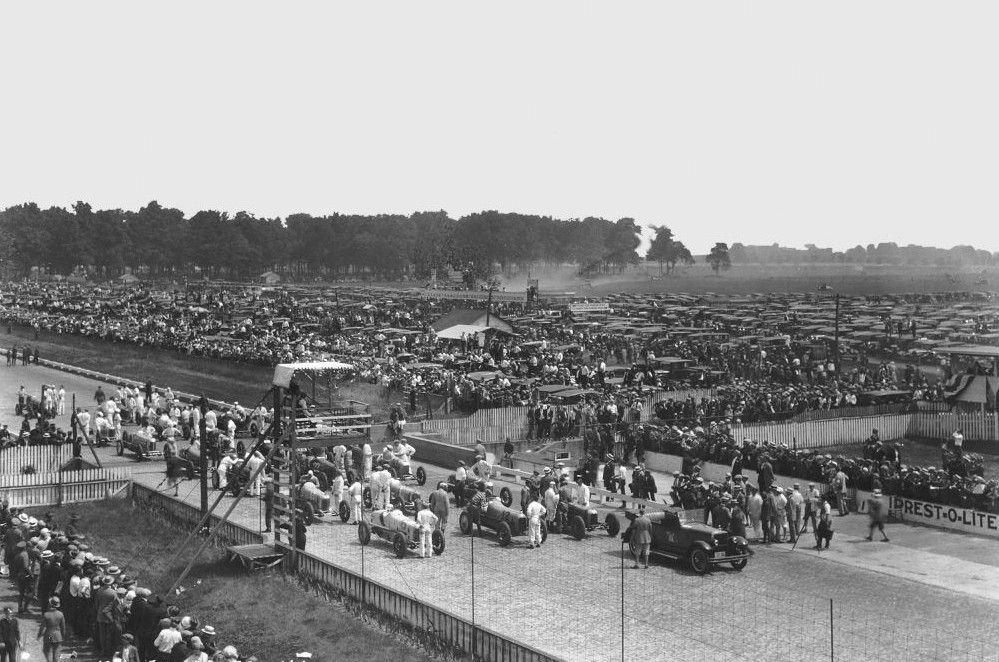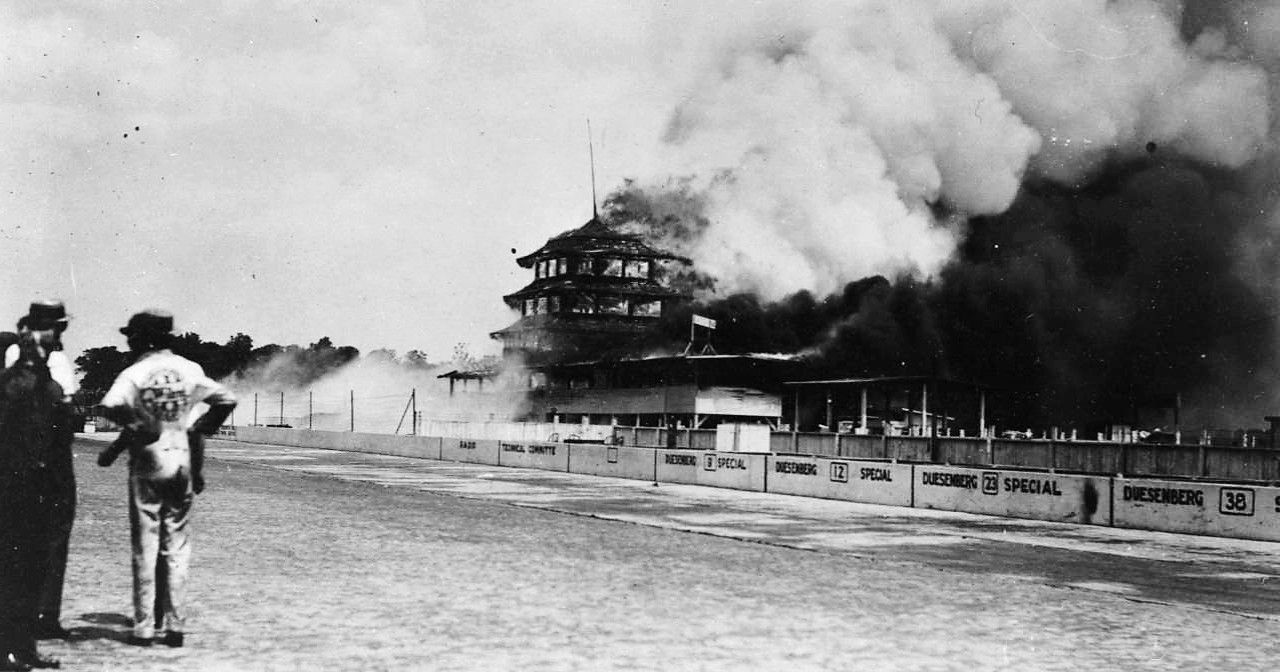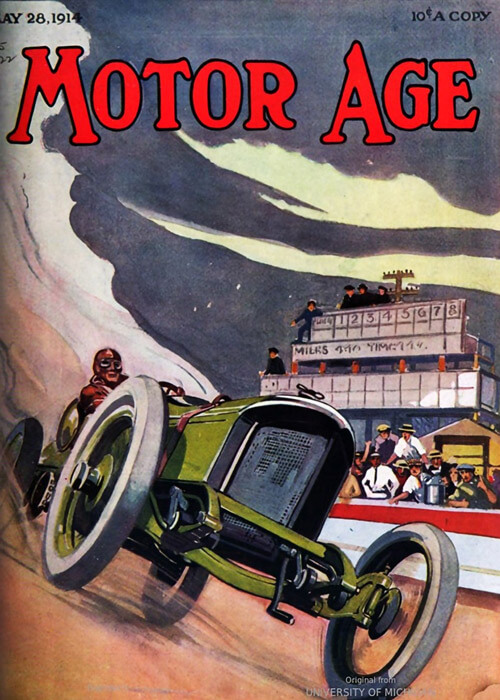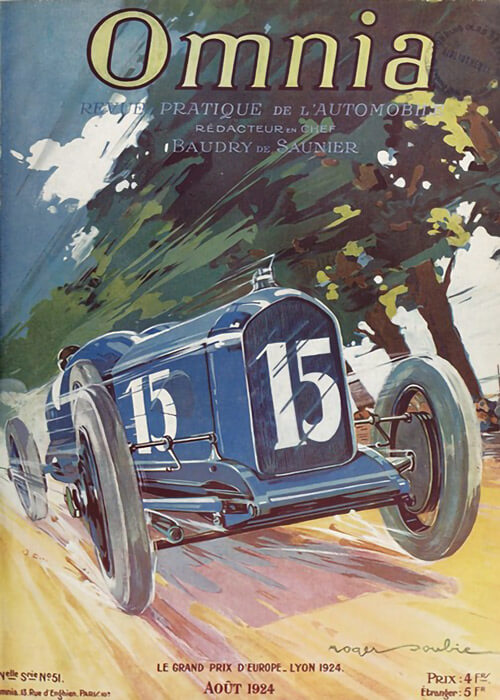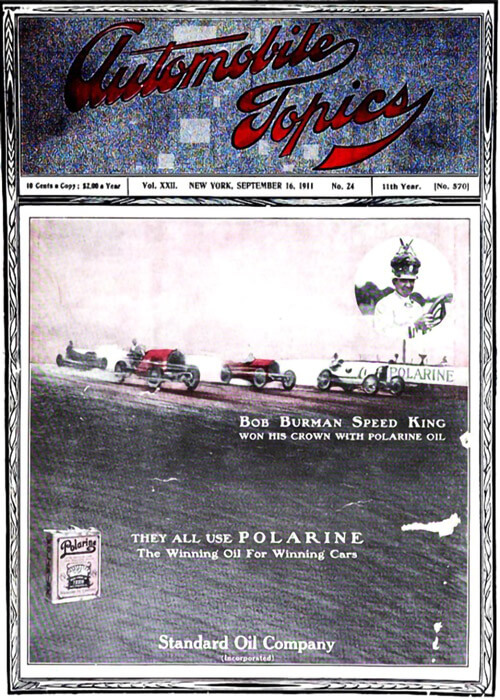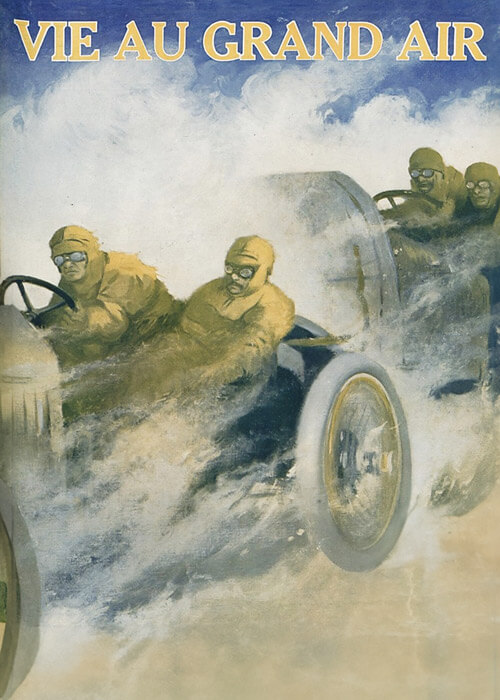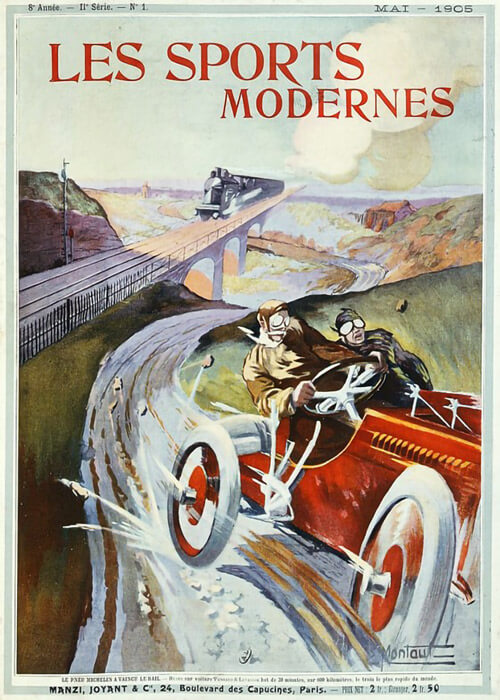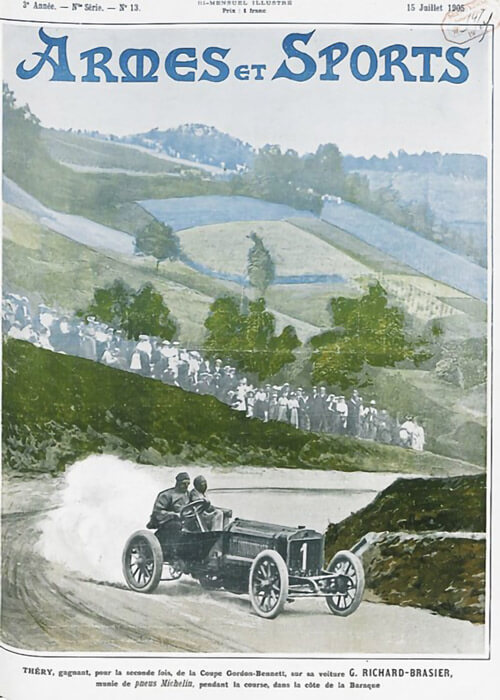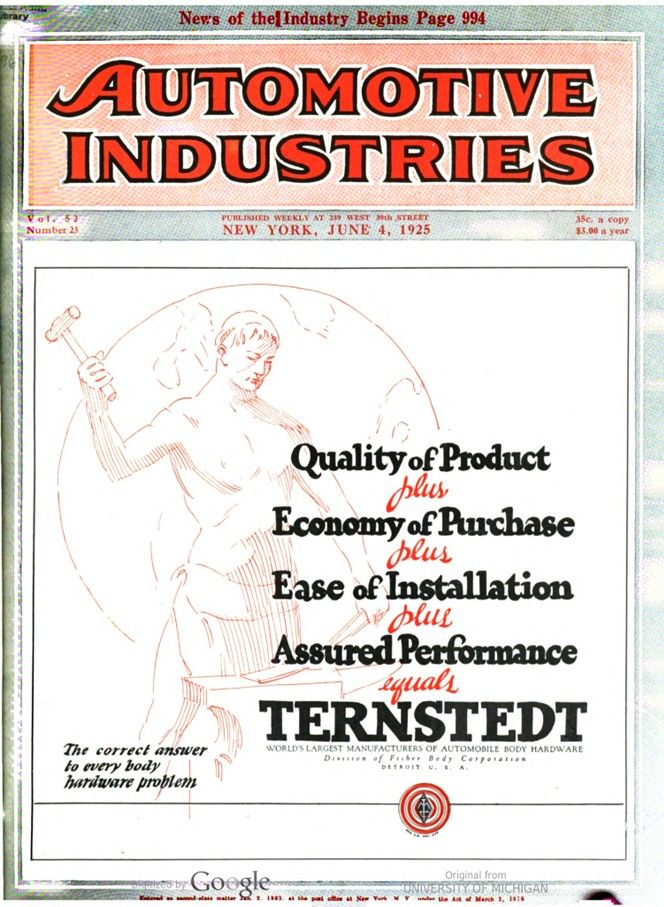

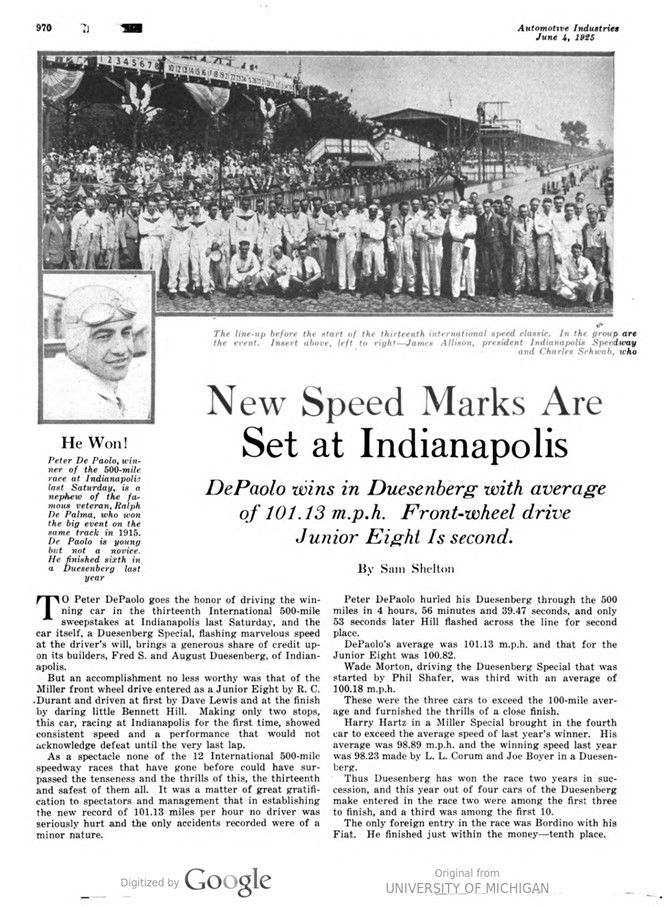

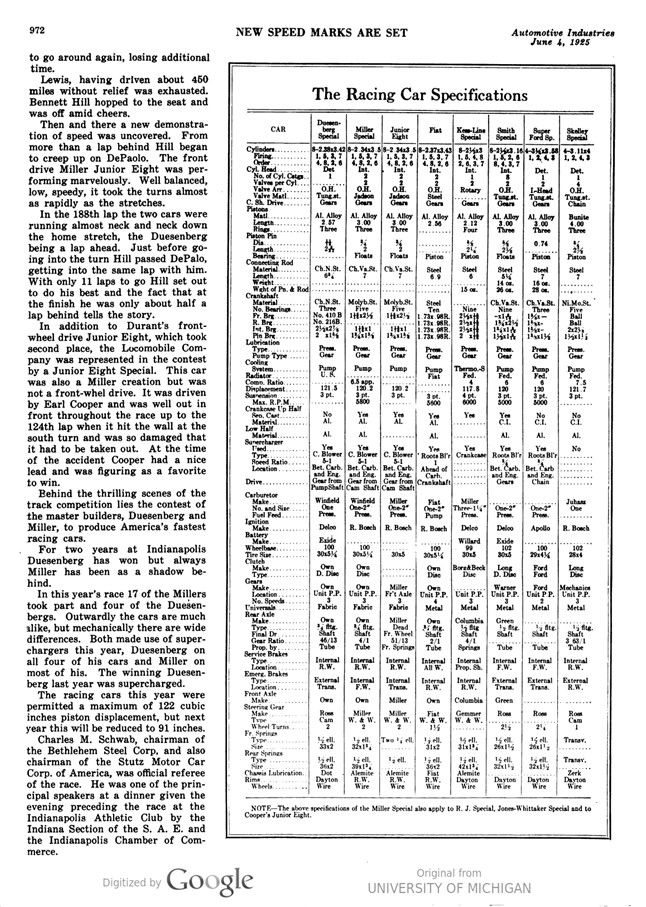
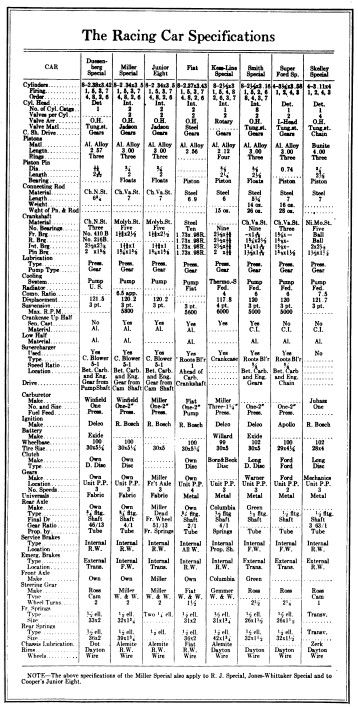
Text and jpegs by courtesy of hathitrust.org www.hathitrust.org, compiled by motorracinghistory.com
Automotive Industries Vol. 52, No. 33, June 4, 1925
New Speed Marks Are Set at Indianapolis
DePaolo wins in Duesenberg with average of 101.13 m.p.h. Front-wheel drive Junior Eight Is second.
By Sam Shelton
TO Peter DePaolo goes the honor of driving the winning car in the thirteenth International 500-mile sweepstakes at Indianapolis last Saturday, and the car itself, a Duesenberg Special, flashing marvelous speed at the driver’s will, brings a generous share of credit upon its builders, Fred S. and August Duesenberg, of Indianapolis.
But an accomplishment no less worthy was that of the Miller front wheel drive entered as a Junior Eight by R. C. Durant and driven at first by Dave Lewis and at the finish by daring little Bennett Hill. Making only two stops, this car, racing at Indianapolis for the first time, showed consistent speed and a performance that would not acknowledge defeat until the very last lap.
As a spectacle none of the 12 International 500-mile speedway races that have gone before could have sur- passed the tenseness and the thrills of this, the thirteenth and safest of them all. It was a matter of great gratification to spectators and management that in establishing the new record of 101.13 miles per hour no driver was seriously hurt and the only accidents recorded were of a minor nature.
Peter DePaolo hurled his Duesenberg through the 500 miles in 4 hours, 56 minutes and 39.47 seconds, and only 53 seconds later Hill flashed across the line for second place.
DePaolo’s average was 101.13 m.p.h. and that for the Junior Eight was 100.82.
Wade Morton, driving the Duesenberg Special that was started by Phil Shafer, was third with an average of 100.18 m.p.h.
These were the three cars to exceed the 100-mile average and furnished the thrills of a close finish.
Harry Hartz in a Miller Special brought in the fourth car to exceed the average speed of last year’s winner. His average was 98.89 m.p.h. and the winning speed last year was 98.23 made by L. L. Corum and Joe Boyer in a Duesenberg.
Thus Duesenberg has won the race two years in succession, and this year out of four cars of the Duesenberg make entered in the race two were among the first three to finish, and a third was among the first 10.
The only foreign entry in the race was Bordino with his Fiat. He finished just within the money – tenth place.
The Junior Eight front wheel drive was a center of interest from the start. Another front drive Miller, a companion to this car, had been entered by Harry Miller, veteran builder of racing cars, and was to have been driven by Bennett Hill, but Hill found the car not to his liking and with the consent of the drivers he was permitted to start in a regular rear drive Miller and the other front drive was withdrawn.
When, in the course of the race, Hill’s Miller was eliminated, he was selected to relieve Dave Lewis at the wheel of the Junior Eight Miller and he demonstrated two things, first that the front drive creation has speed to burn and, second, that he is a master driver of that type of vehicle.
DePaolo was a promising contender from the start. Taking the lead on the first lap he held it until the fifty-fourth lap and then it was taken from him by his teammate, Phil Shafer, in Duesenberg No. 9.
DePaolo’s car was No. 12. DePaolo at this time had slackened his speed somewhat, but a little later he demonstrated that at will he could take the lead and hold it. After he had relegated Shafer to second place he held the lead until he was forced to stop for a tire change and oil and fuel.
Meanwhile Dave Lewis in the front wheel drive car had been steadily forging ahead, passing Shafer and others and taking the lead while DePaolo’s Duesenberg was at the pit.
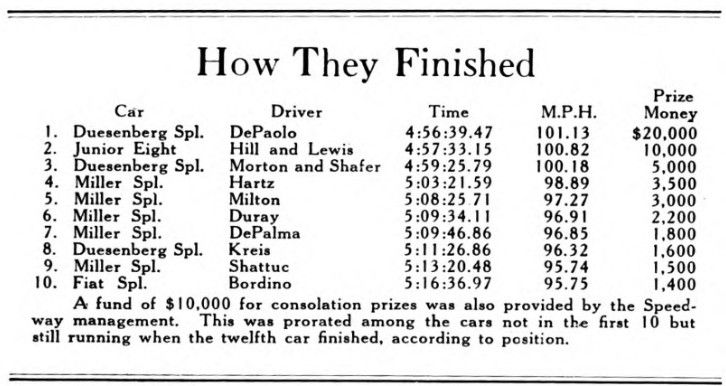
When DePaolo’s car came out of the pit it was driven by Norman Batten – young DePaolo was taking a much-needed rest. Batten, although driving skillfully, could not maintain the pace set by DePaolo and gradually the Duesenberg fell back.
Batten remained at the wheel of the Duesenberg only 34 minutes and during that time the leadership fluctuated, but when the car was called in and DePaolo put back in the pilot’s seat Lewis in his Junior Eight front drive was well in the lead.
DePaolo touched his Duesenberg with the magic that made it spurt forward with renewed energy. One after another of the intervening cars he passed until he was less than 16 seconds behind Lewis and gaining.
And then, with the grandstands almost breathless with the tenseness of the situation, Lewis signaled his pitmen and was seen to slow up. DePaolo instantly passed him and Lewis overran his pit so that he had go around again, losing additional time.
Lewis, having driven about 450 miles without relief was exhausted. Bennett Hill hopped to the seat and was off amid cheers. Then and there a new demonstration of speed was uncovered. From more than a lap behind Hill began to creep up on DePaolo. The front drive Miller Junior Eight was performing marvelously. Well balanced, low, speedy, it took the turns almost as rapidly as the stretches. In the 188th lap the two cars were running almost neck and neck down the home stretch, the Duesenberg being a lap ahead. Just before going into the turn Hill passed DePalo, getting into the same lap with him. With only 11 laps to go Hill set out to do his best and the fact that at the finish he was only about half a lap behind tells the story.
In addition to Durant’s front-wheel drive Junior Eight, which took second place, the Locomobile Company was represented in the contest by a Junior Eight Special. This car was also a Miller creation but was not a front-wheel drive. It was driven by Earl Cooper and was well out in front throughout the race up to the 124th lap when it hit the wall at the south turn and was so damaged that it had to be taken out. At the time of the accident Cooper had a nice lead and was figuring as a favorite to win.
Behind the thrilling scenes of the track competition lies the contest of the master builders, Duesenberg and Miller, to produce America’s fastest racing cars.
For two years at Indianapolis Duesenberg has won but always Miller has been as a shadow behind.
In this year’s race 17 of the Millers took part and four of the Duesenbergs. Outwardly the cars are much alike, but mechanically there are wide differences. Both made use of superchargers this year, Duesenberg on all four of his cars and Miller on most of his. The winning Duesenberg last year was supercharged. The racing cars this year were permitted a maximum of 122 cubic inches piston displacement, but next. year this will be reduced to 91 inches.
Charles M. Schwab, chairman of the Bethlehem Steel Corp, and also chairman of the Stutz Motor Car Corp. of America, was official referee of the race. He was one of the principal speakers at a dinner given the evening preceding the race at the Indianapolis Athletic Club by the Indiana Section of the S. A. E. and the Indianapolis Chamber of Commerce.
Photo captions.
Automotive Industries 970 June 4, 1925
The line-up before the start of the thirteenth international speed classic. In the group are the officials, drivers and mechanicians who participated in the event. Insert above, left to right – James Allison, President Indianapolis Speedway Association; Eddie Rickenbacker, who paced the first lap, and Charles Schwab, who acted as official referee
He Won!
Peter De Paolo, winner of the 500-mile race at Indianapolis last Saturday, is a nephew of the famous veteran, Ralph De Palma, who won the big event on the same track in 1915. De Paolo is young but not a novice. He finished sixth in a Duesenberg last year.
Automotive Industries 971 June 4, 1925
The Car
The Duesenberg which De Paolo drove to victory. View shows right side of engine. The supercharger, which played such an important part in the car’s performance, is seen midway of the motor
